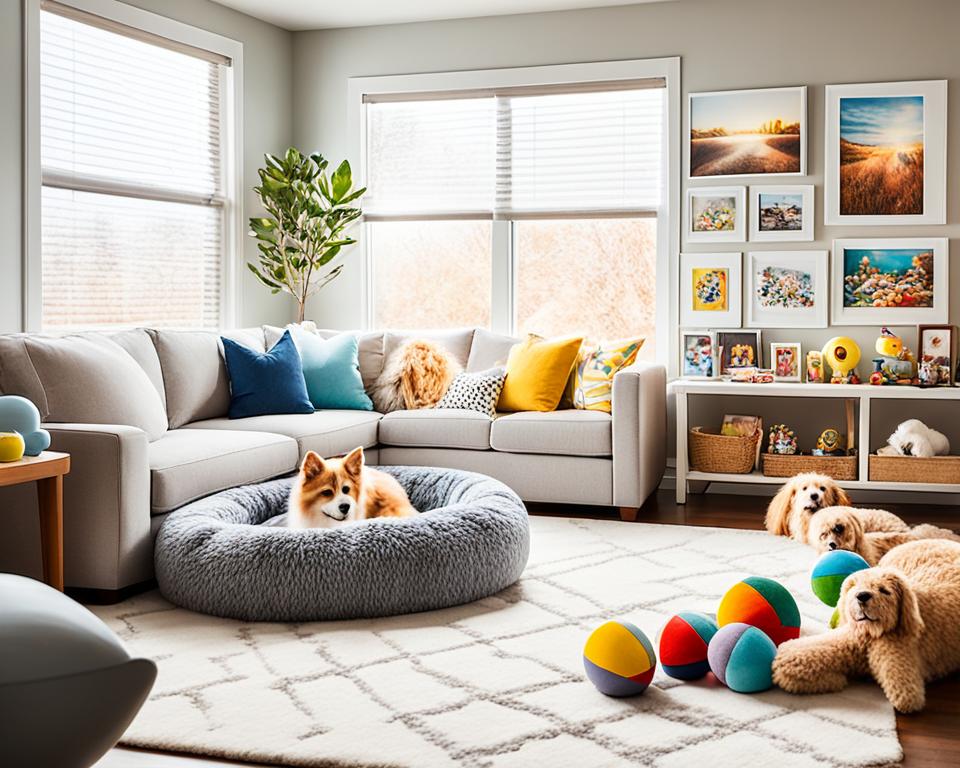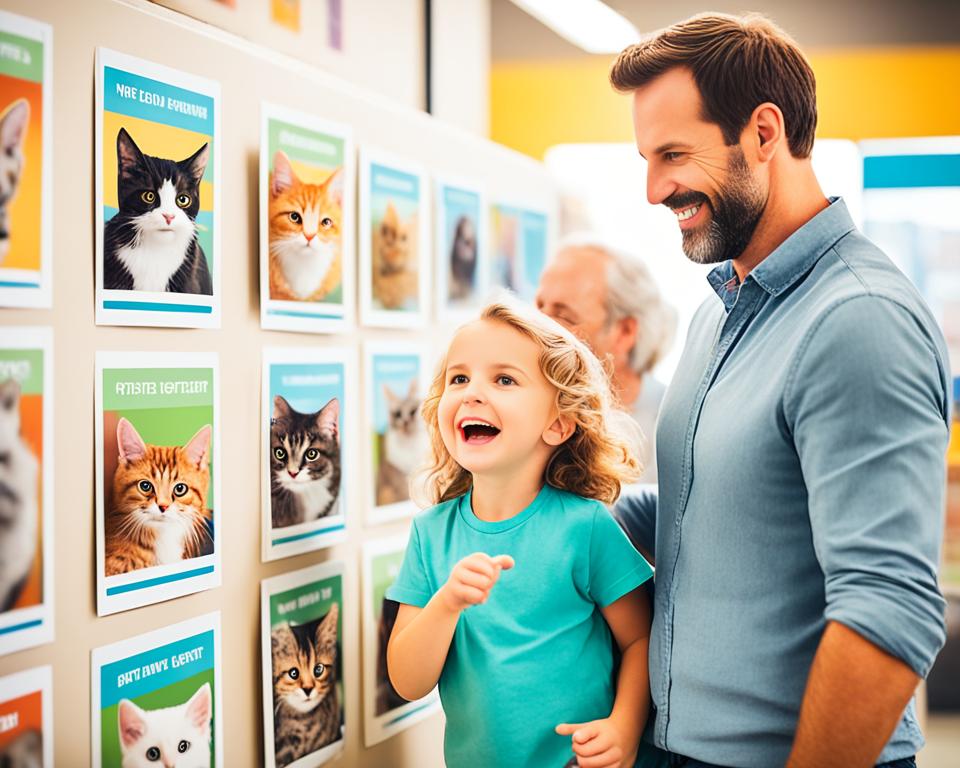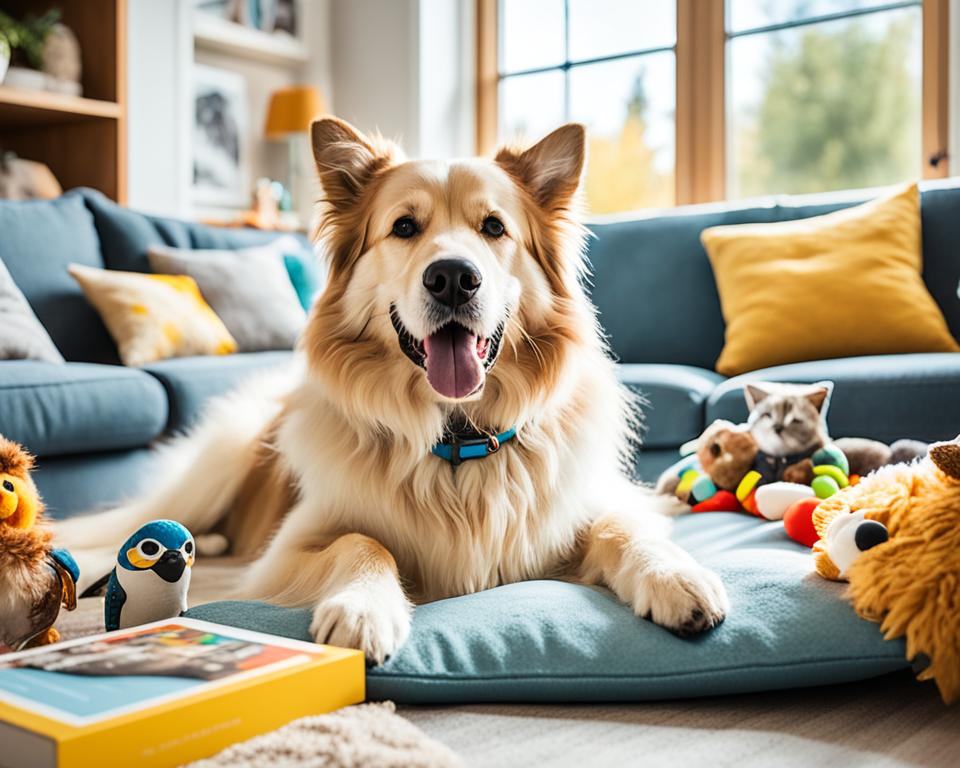Greetings! As a proud pet parent, I know firsthand the joy and fulfillment that comes from sharing my life with a furry companion. Pet parenthood is a journey filled with unconditional love, companionship, and countless unforgettable moments. In this article, I will delve into the art of pet parenting, providing you with valuable tips and insights to create a loving home for your pet and ensure their well-being. Whether you’re a new pet owner or have been on this journey for years, there’s always room to enhance your pet-parenting skills and strengthen the bond with your four-legged friend.
From the benefits of owning a pet to the essentials of pet care, we’ll explore every aspect of creating a happy home for your furry friend. Learn how to understand pet parenthood, foster a strong emotional connection, and address the challenges that come with pet ownership. Discover the art of creating a loving environment that promotes your pet’s well-being and happiness. We’ll also discuss the joy of pet parenthood and how shared activities and celebrating your pet’s unique personality can deepen your bond. Plus, we’ll delve into the essentials of pet care, from nutrition to exercise and health care, ensuring your pet’s overall wellness.
Join me on this journey of pet parenthood as we discover the key pillars of creating a happy home for our beloved pets.
Key Takeaways:
- Understanding pet parenthood and the emotional bond between you and your pet.
- Creating a loving environment that promotes your pet’s well-being.
- Engaging in shared activities and celebrating your pet’s unique personality.
- Providing essential care through proper nutrition, exercise, and regular vet visits.
- Bonding with your pet through daily routines and establishing a sense of security.
Understanding Pet Parenthood
When it comes to welcoming a furry friend into your home, understanding pet parenthood goes beyond the basics of providing food and shelter. It involves establishing a deep connection with your pet and addressing the challenges that come with owning a pet. In this section, we will explore the concepts of mindfulness, the emotional bond between you and your pet, and how to navigate the common difficulties that pet owners encounter.
Defining Mindfulness with Your Pet
Mindfulness, often associated with the practice of being fully present in the moment, holds great importance in pet ownership. By being mindful with your pet, you create a space where you can understand and respond to their needs with empathy and compassion. It involves observing their behaviors, acknowledging their emotions, and providing a loving and safe environment for them to thrive. Practicing mindfulness with your pet allows for a deeper understanding of their unique personality and strengthens the bond you share.
The Emotional Bond Between You and Your Pet
The pet-human bond is a powerful and extraordinary connection that forms between individuals and their pets. It goes beyond words, transcending the barriers of language and relying on empathy, love, and companionship. This emotional bond is a source of comfort, joy, and support for both you and your pet. Understanding and nurturing this bond through shared experiences, communication, and affection is vital for a harmonious and fulfilling relationship.
Addressing the Challenges of Pet Ownership
Pet ownership comes with its own set of challenges that can test even the most experienced pet parents. From behavioral issues to health concerns and time constraints, it’s important to be aware of these challenges and find effective solutions. By seeking pet ownership advice and implementing strategies that address these challenges, you can create a harmonious living environment for both you and your pet. Embracing the journey of pet parenthood with patience, flexibility, and a proactive mindset allows you to navigate the complexities of pet ownership and ensure your furry friend’s well-being.
Creating a Loving Environment for Your Pet
Creating a loving environment for your pet is essential for their overall wellbeing. A pet-friendly home not only ensures their happiness but also promotes a sense of security and calmness. To achieve this, there are several key considerations to keep in mind.
- Declutter: Start by decluttering your living space to create a clean and safe environment for your pet. Remove any potential hazards or items that could be chewed or swallowed.
- Soothing Colors: Incorporate soothing colors into your home decor. Shades of blue and green can help create a relaxing atmosphere for your pet. Consider using these colors in bedding, rugs, and wall paint.
- Natural Elements: Bring the outdoors inside by adding natural elements to your home. Place indoor plants (pet-safe ones) and natural materials like wood or bamboo to create a soothing and aesthetically pleasing environment.
- Organize Pet Belongings: Organize your pet’s belongings, such as their bedding, toys, and food and water bowls. This not only helps to keep your space tidy but also gives your pet a designated area that they can call their own.
- Comfortable Sleeping Area: Provide your pet with a comfortable and cozy sleeping area. Choose a bed or mat that suits their size and breed, and place it in a quiet and cozy corner of your home.
By implementing these simple steps, you can create a pet-friendly and loving environment that will contribute to your pet’s happiness and wellbeing.

The Joy of Pet Parenthood
The joy of pet parenthood is a truly special experience. The bond we share with our furry friends is unlike any other, filled with love, companionship, and countless unforgettable moments. In this section, we will explore activities that can enhance the relationship with your pet and celebrate their unique personalities.
Shared Activities to Enhance Your Relationship
Engaging in shared activities with your pet is a wonderful way to strengthen your bond and create lasting memories. Here are some ideas to consider:
- Going on leisurely walks together in your neighborhood or at a nearby park. This allows you to spend quality time with your pet while also providing them with exercise and mental stimulation.
- Playing interactive games, such as fetch, tug-of-war, or hide-and-seek. These activities promote physical activity, mental engagement, and bonding between you and your pet.
- Training sessions that encourage learning and obedience. Not only does this help establish clear communication with your pet, but it also strengthens your bond as you work together towards shared goals.
- Exploring new environments together, such as pet-friendly hiking trails or pet cafes. This not only provides fresh and exciting experiences for your pet but also allows you to enjoy their company in different settings.
Remember, every pet is unique, so be sure to tailor your shared activities to their individual preferences, abilities, and comfort levels. The key is to focus on activities that both you and your pet enjoy and that foster a sense of connection.
Recognizing and Celebrating Your Pet’s Unique Personality
Just like humans, pets have their own distinct personalities and quirks that make them special. Recognizing and celebrating these unique traits is an essential part of pet parenthood. Here are some ways to honor your pet’s individuality:
- Observe and appreciate their behavior and preferences. Pay attention to their likes, dislikes, and the activities that bring them joy.
- Document your pet’s funny, endearing, and memorable moments through photos or videos. These mementos not only capture their unique personalities but also serve as cherished memories.
- Create a personalized space for your pet within your home, filled with their favorite toys, bedding, and belongings. This provides them with a sense of security and a space where they can truly be themselves.
- Hold pet-themed celebrations or “Paw-Ties” on their birthdays or adoption anniversaries. Invite friends and family who love and adore your pet to join in the festivities.
Celebrating your pet’s unique personality is a beautiful way to honor their presence in your life. It shows them that they are cherished and loved for who they are.
https://www.youtube.com/watch?v=LAVO5h6TMn4
| Benefits of Shared Activities | Reasons to Celebrate Your Pet’s Personality |
|---|---|
|
|
No matter how you choose to celebrate your pet’s personality or engage in shared activities, always prioritize their comfort, safety, and well-being. Cherish the moments you spend together, for they are truly precious and form the foundation of your incredible bond.
Pet Care Essentials for a Happy Home
Feeding: Quality Nutrition for Your Pet’s Well-Being
Providing your pet with quality nutrition is essential for their overall well-being. A balanced diet that meets their specific nutritional needs ensures optimal health and promotes a happy, active lifestyle. It’s important to choose high-quality pet food that contains all the essential nutrients and avoids unnecessary fillers or artificial ingredients. Consider consulting with your veterinarian to determine the best diet plan for your pet based on their age, breed, size, and any specific dietary requirements they may have.

Exercise: Ensuring Adequate Physical Activity
Regular exercise is crucial for maintaining your pet’s physical and mental well-being. Engaging in physical activities helps them burn energy, maintain a healthy weight, and prevent behavioral issues caused by boredom or pent-up energy. The type and amount of exercise needed may vary depending on your pet’s age, breed, and overall health. Dogs may require daily walks, playtime, and interactive games, while cats may benefit from toys and climbing structures. Ensuring your pet gets adequate exercise not only keeps them fit but also strengthens the bond between you and your furry friend.
Health Care: Regular Vet Visits and Preventive Measures
Regular veterinary care plays a vital role in keeping your pet healthy and preventing potential health issues. Schedule routine wellness visits to monitor your pet’s overall health, receive vaccinations, and address any concerns or preventive treatments such as flea and tick control, heartworm prevention, and dental care. These preventive measures can help detect and address potential health issues early, ensuring optimal well-being for your pet. Additionally, maintaining a clean and safe environment, providing regular grooming, and keeping up with parasite control are essential aspects of their health care routine.
| Pet Care Essentials | Pet Nutrition | Pet Exercise | Pet Health Care |
|---|---|---|---|
| Feeding: Quality Nutrition for Your Pet’s Well-Being | Ensure a balanced diet with essential nutrients | Regular exercise for physical and mental well-being | Regular vet visits and preventive measures for optimal health |
Bonding with Your Pet Through Daily Routines
Daily routines provide opportunities for pet bonding and strengthening the pet-human bond. By establishing consistent daily pet routines such as feeding, grooming, and playtime, you can create a sense of security and build trust with your furry companion. These routines not only fulfill your pet’s physical and emotional needs but also foster a deep connection between you and your pet.
Feeding time is not just about providing nourishment, but it is also a chance to bond with your pet. Whether you feed them at specific times or engage in interactive feeding games, this daily routine creates a sense of anticipation and strengthens your pet’s association between you and mealtime.
Grooming is another essential pet care routine that offers bonding opportunities. Brushing your pet’s fur, cleaning their paws, or giving them a bath enhances your physical contact and allows you to show them love and care. It also helps build trust as your pet becomes accustomed to these regular grooming sessions.
Playtime is an indispensable component of daily routines for both pets and their owners. Engaging in interactive play, whether through toys, fetch, or hide-and-seek, not only provides physical exercise but also strengthens the emotional bond. It’s a chance to create joyful memories, release stress, and show your pet that they are truly loved and cherished.
By incorporating these pet care routines into your daily life, you create a structured and predictable environment that can greatly benefit your pet’s overall well-being. Your furry friend will feel safe, loved, and deeply connected to you, resulting in a happy and harmonious home.
Introducing New Pets into the Household
Introducing a new pet into the household can be an exciting and fulfilling experience, but it also comes with its challenges. To ensure a smooth transition and a harmonious environment for multi-pet homes, there are several important strategies to consider. By taking proactive steps to establish a positive atmosphere and managing the dynamics of a multi-dog household, you can foster a balanced and happy pet family.
Creating a Positive Environment for Multi-Pet Homes
When introducing a new pet into your home, it’s essential to create a positive environment that promotes acceptance and harmony among your furry family members. Here are some tips to help you achieve this:
- Gradual Introduction: Take it slow and allow your pets to become familiar with the new scent of the incoming pet before any direct interaction.
- Neutral Territory: Conduct the first introductions in a neutral space, such as a park or a friend’s backyard, to reduce territorial instincts.
- Supervised Interactions: Keep the initial interactions between pets short and closely supervised to prevent any aggressive behavior or undue stress.
- Positive Reinforcement: Reward good behavior with treats, praise, and affection to encourage positive associations between the pets.
Managing the Dynamics of a Multi-Dog Household
Understanding and managing the dynamics of a multi-dog household is crucial for maintaining a peaceful and happy environment. Here are some key considerations:
- Establishing a Hierarchy: Dogs naturally establish a hierarchy within their social structure. Allow them to determine their positions, but ensure that all interactions are respectful and safe.
- Individual Attention: Provide each dog with individual attention, exercise, and training to prevent jealousy or competition for resources.
- Consistent Rules and Boundaries: Establish consistent rules and boundaries for all pets in your household to maintain order and prevent conflicts.
- Separate Feeding Areas: Feed your pets in separate areas to avoid food aggression and territorial behavior.
By following these tips and strategies, you can create a positive environment for your multi-pet household and ensure a smooth integration of any new additions. Remember, patience and understanding are key to fostering a harmonious pet family.
Pet Adoption Process: Beginning the Journey Together
The adoption process is a crucial step in your journey as a pet parent. It involves thoughtful consideration and preparation to ensure that you choose the right pet and provide them with a loving forever home. Adopting a pet is a wonderful way to add a furry companion to your family while also giving a deserving animal a second chance at happiness.
When starting the pet adoption process, there are several steps to follow:
- Research different breeds and species to understand their characteristics, temperament, and specific care requirements.
- Consider your lifestyle, living arrangements, and family dynamics to determine which type of pet would be the best fit.
- Visit local animal shelters and rescue organizations to meet the available pets and learn more about their backgrounds.
- Spend time interacting with the pets to see if there is a natural connection or bond.
- Ask questions about the pet’s medical history, behavior, and any special needs they may have.
- Discuss the adoption process, fees, and requirements with the shelter or rescue staff.
- Complete any necessary paperwork and provide the required documentation, such as identification and proof of residence.
- Prepare your home for the new arrival by pet-proofing the living space and obtaining essential supplies, including food, water bowls, bedding, and toys.
- Arrange a visit with a veterinarian to schedule an initial health checkup and discuss vaccinations, spaying/neutering, and ongoing care.
Choosing the right pet is a deeply personal decision, and it’s important to consider factors such as your lifestyle, available time for pet care, and any allergies or sensitivities within your household. Every animal has their own unique personality, and finding a pet that aligns with your family’s needs and preferences will contribute to a harmonious and fulfilling relationship.
Adopting a pet is not only a rewarding experience for you but also a lifeline for the animal you welcome into your home. By offering love, care, and a safe environment, you are making a meaningful difference in their lives. Together, you can embark on a journey filled with love, companionship, and countless cherished memories.

Raising a Happy and Healthy Pet: Tips for Every Stage
Pets go through different stages of life, each requiring specific care and attention. In order to provide the best possible care for your furry companion, it is important to understand the unique needs of each life stage. This section will provide expert tips for raising a happy and healthy pet at every stage, including puppyhood, adulthood, and senior care.
Puppyhood: Laying the Foundation for Good Behavior
Puppyhood is a critical time for laying the foundation for good behavior and shaping your pet’s future. The key to successful puppy care is consistency, patience, and positive reinforcement. Here are some tips to help you navigate this exciting but challenging stage:
- Start with basic training commands like sit, stay, and come.
- Establish a routine for feeding, potty breaks, and exercise.
- Socialize your puppy with other dogs, people, and new environments.
- Provide plenty of opportunities for mental stimulation through interactive toys and puzzles.
- Be patient and understanding as your puppy learns and grows.
Adulthood: Keeping Your Pet Engaged and Active
As your pet transitions into adulthood, their needs will change. It’s important to keep them engaged and active to ensure their physical and mental well-being. Here are some tips for caring for your adult pet:
- Continue with regular exercise to keep them fit and healthy.
- Provide mental stimulation through interactive play, training sessions, and puzzle toys.
- Maintain a balanced diet with nutrition appropriate for their age and breed.
- Monitor their weight and adjust their diet accordingly.
- Keep up with regular veterinary check-ups and vaccinations.
Senior Care: Adjusting to Your Pet’s Changing Needs
As your pet enters their golden years, their needs will change once again. Senior pets require special care and attention to ensure their comfort and quality of life. Here are some tips for providing senior care:
- Schedule regular veterinary check-ups to monitor their health and address any age-related conditions.
- Modify their diet to support their aging body, considering weight management and joint health.
- Provide comfortable bedding and a quiet environment to accommodate their changing sleep patterns.
- Adjust exercise routines to low-impact activities that are suitable for their age and mobility levels.
- Offer plenty of mental stimulation through interactive toys and puzzles.
Pet Care by Life Stage
Conclusion
In conclusion, as a pet parent, I have learned that creating a happy home for your pet involves understanding the responsibilities and joys of pet parenthood. It is not just about providing food and shelter, but also about cultivating a loving environment that promotes their overall well-being.
By prioritizing essential care such as feeding them quality nutrition, ensuring they get enough exercise, and taking them for regular vet visits, you are laying the foundation for their good health and happiness. Moreover, bonding through daily routines like feeding, grooming, and playtime establishes trust and strengthens the pet-human relationship.
Embracing the joy of pet ownership brings immeasurable happiness and companionship. Watching your furry friend grow and experiencing their unconditional love is a truly rewarding journey. Whether it’s celebrating their unique personality or simply snuggling up together on the couch, every moment with your pet is special and filled with joy.
FAQ
What is pet parenthood?
Pet parenthood refers to the responsibilities and joys of owning a pet, including providing a loving home, ensuring their well-being, and nurturing a strong bond with them.
What does it mean to be mindful with your pet?
Being mindful with your pet involves being fully present in their lives, understanding their needs and behaviors without judgment, and creating a safe and loving environment for them to thrive.
How do I create a loving environment for my pet?
Creating a loving environment for your pet involves making your home pet-friendly, decluttering, incorporating soothing colors and natural elements into the decor, and organizing their belongings to promote a sense of calm and security.
What are some activities that can enhance the bond with my pet?
Activities such as going on walks, playing interactive games, and spending quality time together can strengthen the bond with your pet. It’s also important to recognize and celebrate their unique personality traits and quirks.
What are the essential care practices for a happy pet?
Essential care practices for a happy pet include providing quality nutrition tailored to their needs, ensuring regular exercise for physical and mental stimulation, and scheduling regular vet visits for preventive care.
How do daily routines contribute to bonding with my pet?
Consistent daily routines such as feeding, grooming, and playtime help build trust, strengthen the pet-human bond, and create a sense of security for your furry companion.
How do I introduce a new pet into my household?
Introducing a new pet into your household requires creating a positive environment for multi-pet homes, which involves proper introductions and strategies for establishing harmony among your furry family members. Managing dynamics in a multi-dog household may also be necessary.
How do I navigate the pet adoption process?
The pet adoption process involves researching different breeds, considering your lifestyle, visiting shelters and rescues, and choosing the right pet for your family. It’s important to ensure a smooth transition into your home.
How do I raise a happy and healthy pet at different life stages?
Raising a happy and healthy pet involves laying the foundation for good behavior during puppyhood, keeping them engaged and active during adulthood, and adjusting to their changing needs during senior care.
Source Links
- https://dogtime.com/lifestyle/116993-mindful-dog-parent
- https://www.dogtopia.com/blog/what-you-need-to-know-when-welcoming-a-second-dog-into-your-family/
- https://thepalettemuse.com/how-to-puppy-proof-your-home/

